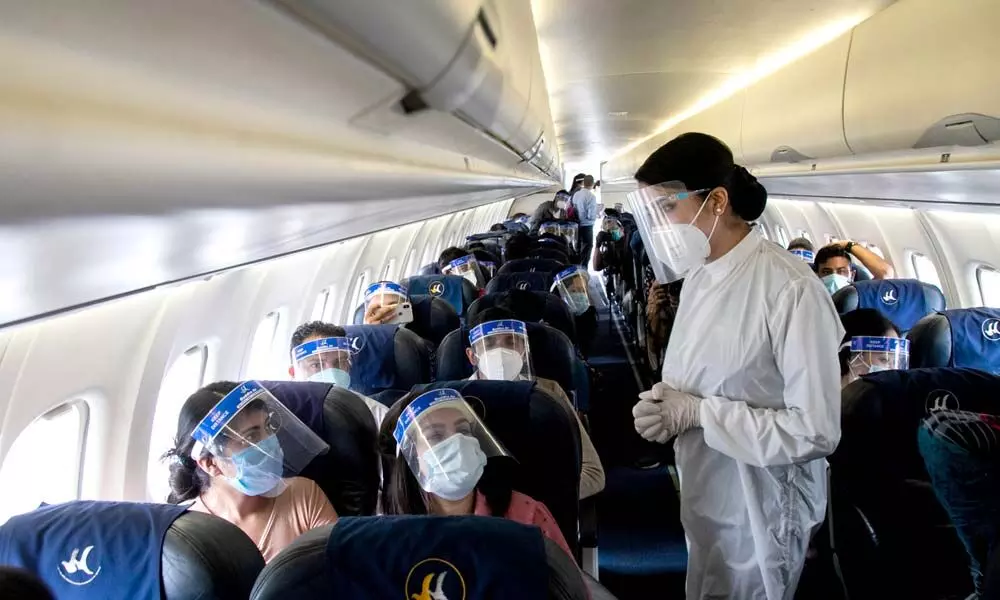Light at the end of the Covid tunnel seems to be growing brighter for aviation sector
Forecast reflects some of the trends we’re already seeing - the early retirement of older and less efficient aircraft, a preference for more profitable smaller airplanes to match weaker demand, and the growing importance of domestic and regional airline networks in the restoration of air service. Aircraft with up to 150 seats will be instrumental in how quickly our industry recovers
image for illustrative purpose

The global pandemic is causing fundamental changes that are reshaping air travel patterns and demand for new aircraft. There are four main drivers: Fleet Rightsizing - a shift to smaller-capacity, more versatile aircraft to match weaker demand; Regionalisation - companies seeking to protect their supply chains from external shocks will bring businesses closer, generating new traffic flows; Passenger Behavior - preference for shorter-haul flights and decentralization of offices from large urban centers will require more diverse air networks and Environment - renewed focus on more efficient, greener aircraft types
"The short-term impact of the global pandemic has long-term implications for new aircraft demand," said Arjan Meijer, President and CEO of Embraer Commercial Aviation. "Our forecast reflects some of the trends we're already seeing - the early retirement of older and less efficient aircraft, a preference for more profitable smaller airplanes to match weaker demand, and the growing importance of domestic and regional airline networks in the restoration of air service. Aircraft with up to 150 seats will be instrumental in how quickly our industry recovers.
Global passenger traffic (measured in Revenue Passenger Kilometers - RPKs) will return to 2019 levels by 2024, yet remain 19 per cent below Embraer's previous forecast through the decade, to 2029. RPKs in Asia Pacific will grow the fastest (3.4 per cent annually).
4,420 new jets up to 150 seats will be delivered through 2029. 75 per cent of deliveries will replace ageing aircraft, 25 per cent representing market growth. The majority will be to airlines in North America (1,520 units) and Asia Pacific (1,220).
1,080 new turboprops will be delivered through 2029. The majority will be to airlines in China/Asia Pacific (490 units) and Europe (190).
"The light at the end of the Covid tunnel seems to be growing brighter. GlobalAir.com's latest market trend report saw large increases in inquiries across the board in general aviation of more than 73 per cent from 2019 to 2020.
Inventory (number of aircraft listed) on GlobalAir.com, on the other hand, hit a record all-time low, leading us to believe it has become a seller's market overall. According to their statistics, Q4 2020 alone showed that more than 510 aircraft were marked as sold or under contract, indicating an increased need for lift.
"I have spoken with several major aircraft sales brokerage firms from around the world, each citing an influx of new first time aircraft buyers," said GlobalAir.com President Jeffrey Carrithers. "With the combination of the 2017 Tax Cuts and Jobs Act (increasing a bonus depreciation to 100 per cent for both new and pre-owned business aircraft), and the influx of new first time buyers, a wave of buying was spurred for both large and small aircraft. I have not seen a market turn so quickly in my 30 years in the aviation business."
According to Google Analytics, GlobalAir.com's website visitors have continued climbing year over year, as well. In the fourth quarter of 2020, page views increased by more than 28 per cent compared to the same quarter in 2019.
JETNET, LLC reports a 12 per cent increase in sales and lease of business jets during the 4th quarter of 2020 as compared to the same quarter of 2019. Topping the list in units by volume was the Cessna Citation CJ3, followed closely by the Gulfstream G-IVSP and the Eclipse EA 500. These pre-owned jets complete the mission that operators are looking for, while simultaneously posing a lesser financial risk during this economic downturn.
'Private Jets' was the single most viewed aircraft class on GlobalAir.com during Q4, claiming 37 per cent of aircraft for sale page views. Not far behind was 'Helicopters' in second with 27 per cent of page views. This contrasts with JETNET, LLC's report of a 24.6 per cent decrease in sales and leases of helicopters during Q4 of 2020 compared to 2019.
Another factor considered from an operational point of view is fuel cost, which brings a sliver of a silver lining. The average cost of JetA and 100LL fuel in the United States has declined since the first quarter of 2020. JetA is reported to have dropped by 10 per cent and 100LL by 3.5 per cent. The aviation industry is continuing to persevere throughout Covid-19, with the light appearing brighter for 2021.

